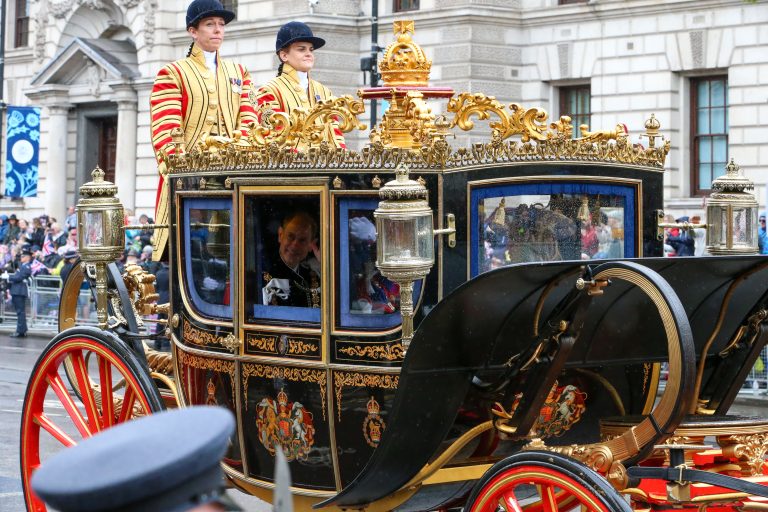
They called them the Wild Geese, but they weren’t birds. They were men. Men with fire in their veins and steel in their spines, men who carried Ireland’s soul into exile when the world turned its back.
The Flight of the Wild Geese isn’t just a chapter in a dusty history book; it’s a wound that still bleeds, a song that still howls, a rebellion that refuses to die.
These were the Irish warriors—soldiers, poets, dreamers—who fled their homeland after the Treaty of Limerick in 1691, their hearts heavy with defeat but unbowed by shame.
They sailed across stormy seas to fight for foreign kings, to carve their names into the annals of Europe’s bloodiest wars, all while carrying the ghost of Ireland in their bones.
The Birth of the Wild Geese: A Nation Betrayed
Picture Ireland in 1691. The air is thick with gunpowder and grief. The Williamite War has just ended, and the ink is still wet on the Treaty of Limerick. The Irish Jacobites, those fierce defenders of a Catholic king, James II, have been crushed by the Protestant might of William of Orange.
The treaty was supposed to be a compromise, a promise of peace and rights for the defeated Irish. But promises, like hearts, are made to be broken.
The English reneged, and the Penal Laws descended like a guillotine, stripping Catholics of land, rights, and dignity. Ireland, already scarred by Cromwell’s slaughter, was now a prison for its own people.
Enter the Wild Geese. These weren’t just soldiers; they were the sons of a nation raped by conquest. Led by men like Patrick Sarsfield, the Earl of Lucan, they refused to kneel.
Sarsfield, a name that still burns like a beacon, negotiated the terms at Limerick, securing passage for his men to France rather than surrender to a life of subjugation. On those ships, thousands strong, they sailed—some say 14,000, others more—leaving behind a land that was no longer theirs but would never stop being home.
Why “Wild Geese”? The name itself is poetry, isn’t it? It conjures images of untamed birds soaring over borders, free yet forever tied to the land they left. It was a term coined later, but it fits like a glove. These men were wild, not in savagery, but in their refusal to be caged. They were Ireland’s heartbeat, scattered across Europe, fighting for France, Spain, Austria—anywhere that would let them wield a sword and dream of return.
The Exile’s Fire: The Wild Geese in Europe

France became their sanctuary, but not their home. The Wild Geese joined the French army, forming the Irish Brigade, a force so fierce it made kings tremble.
Fontenoy, 1745—heard of it? That’s where the Irish Brigade turned the tide, charging into British lines with a roar that echoed back to the hills of Connemara. “Cuimhnígí ar Luimneach!” they shouted—“Remember Limerick!”—as they spilled blood for a foreign flag, all while dreaming of a free Ireland.
They fought at Fontenoy, at Laffeldt, in the Seven Years’ War, their green banners flying high, a defiant middle finger to the empire that cast them out.
But it wasn’t just France. The Wild Geese spread like wildfire. In Spain, they formed regiments like the Hibernia and Irlanda, fighting in the War of the Spanish Succession.
In Austria, they served the Habsburgs. Everywhere they went, they carried their language, their music, their unquenchable thirst for justice. They were mercenaries, sure, but they were more than that. They were Ireland’s ambassadors of defiance, proving to the world that you can exile a man, but you can’t exile his soul.
Want to dive deeper into the battles of the Irish Brigade? Check out our detailed guide on the Irish Brigade’s European campaigns.
The Soul of the Wild Geese: More Than Soldiers
Don’t reduce them to cannon fodder. The Wild Geese weren’t just men with muskets; they were poets, scholars, priests, and dreamers.
They carried Ireland’s culture into exile, keeping it alive in the courts of Europe. They spoke Irish Gaelic in the taverns of Paris, sang laments for their lost homeland, and wrote letters that burned with longing. They were the keepers of a flame that the English tried to snuff out. Every note of their music, every word of their poetry, was a rebellion against oblivion.
Think about it: to leave your home, knowing you might never return, takes a kind of courage that doesn’t fit neatly into history books. These men weren’t just fighting for pay; they were fighting for identity.
Every battle was a chance to prove that Ireland wasn’t dead, that its spirit lived on in the hearts of its exiles. They were the living proof that you can burn a nation’s fields, steal its land, and outlaw its faith, but you can’t kill its soul.
The Legacy of the Wild Geese: Ireland’s Unbroken Spirit
The Wild Geese never came home. Not really. Some died on foreign battlefields, their blood soaking into soil that wasn’t theirs. Others settled in France, Spain, or beyond, their descendants blending into new nations but never quite forgetting. Yet their legacy isn’t one of defeat. It’s one of defiance. The Wild Geese inspired generations of Irish rebels, from the United Irishmen of 1798 to the Easter Rising of 1916. Their story is a reminder that exile isn’t the end—it’s a new beginning, a chance to fight on different terms.
Today, the Wild Geese are a symbol. They’re in the songs we sing, the stories we tell, the way we hold our heads high when the world tries to break us. They’re in the Irish diaspora, scattered across the globe, still carrying that same unyielding spirit. From the pubs of Dublin to the streets of Boston, the Wild Geese live on, their flight a testament to a nation that refuses to be grounded.
SEO note: Curious about the modern Irish diaspora? Explore our article on how the Irish spirit thrives worldwide.
Why the Wild Geese Still Matter
In a world that loves to sanitize history, the Wild Geese are a middle finger to amnesia. They remind us that Ireland’s story isn’t just one of suffering—it’s one of survival. It’s about men who, when faced with annihilation, chose to fight, to sing, to live. It’s about a nation that, even when stripped of everything, found a way to soar. The Flight of the Wild Geese isn’t just a historical event; it’s a call to arms for anyone who’s ever felt cast out, betrayed, or forgotten. It’s a reminder that exile doesn’t mean defeat—it means you carry the fight with you, wherever you go.
So, raise a glass to the Wild Geese. To Sarsfield, to the Irish Brigade, to every man and woman who carried Ireland’s heart into the unknown. They didn’t just fly—they soared. And their wings still beat in the soul of every Irishman, every Irishwoman, every dreamer who refuses to bow.
Explore More About the Wild Geese
The story of the Wild Geese is vast, sprawling across centuries and continents. Want to know more? Dig into the battles, the leaders, the legacy. Visit Ireland’s historical sites, from the walls of Limerick to the battlefields of Fontenoy. Read the poetry, sing the songs, feel the fire. The Wild Geese aren’t just history—they’re a living, breathing part of who we are.
Why Were Irish Soldiers Called Wild Geese?
The term “Wild Geese” isn’t just a name—it’s a cry of exile, a poetic wound. It was born in the shadow of betrayal, after the Treaty of Limerick in 1691, when Patrick Sarsfield led 14,000 Irish Jacobite soldiers to France, fleeing English oppression.
These men, driven from their homeland by the Penal Laws and the broken promises of the Williamite victors, were listed on French merchant ships’ manifests as “wild geese”—a sly nod to their clandestine exodus, smuggled out like contraband brandy. The name stuck, not just for Sarsfield’s men but for centuries of Irish soldiers who served in European armies, from the 16th to the 18th centuries.
Wild Geese Ireland history is a saga of men who, like migratory birds, left Ireland but never forgot her, their hearts tethered to a homeland they might never see again. The Flight of the Wild Geese poem by W.B. Yeats captures this longing: “Was it for this the Wild Geese spread / A grey wing on every tide…”—words that mourn their exile while celebrating their defiance. They were wild, untamed by English chains, soaring to fight for France, Spain, Austria, and beyond, always dreaming of return.
What Are the Wild Geese in the Irish Army?
The Wild Geese weren’t a single unit in the Irish army—they were the Irish army’s soul, scattered across Europe. After the Treaty of Limerick, Sarsfield’s Jacobites, some 14,000 strong, sailed to France, forming the backbone of the French Irish Brigade.
These weren’t just mercenaries; they were exiles, wearing red coats to signal loyalty to the Stuart king, James II. The Flight of the Wild Geese Ireland cast included not just soldiers but 6,000 women and children, entire communities uprooted by English betrayal.
They fought at Fontenoy in 1745, their battle cry—“Cuimhnígí ar Luimneach!” (Remember Limerick!)—a roar of vengeance against the English who broke the treaty. Over time, the term “Wild Geese” grew to encompass all Irish soldiers serving abroad, from Spain’s Hibernia Regiment to Austria’s high-ranking Irish generals.
The Wild Geese meaning is rebellion itself—men who refused to kneel, carrying Ireland’s fight to foreign fields.
Their legacy lives in the Flight of the Wild Geese movie, a fictional nod to their mercenary spirit, and in the Flight of the Wild Geese lyrics of songs that keep their memory alive.
What Are the Wild Geese in Ireland?
In Ireland, the Wild Geese are more than history—they’re a mythos, a symbol of resilience. The term, rooted in the 1691 exodus, has expanded to include all Irish who left to fight in foreign armies from the 16th to 18th centuries, as well as their families and descendants.
They were the Catholic elite, soldiers, priests, and poets, fleeing English persecution after defeats like the Battle of Kinsale and the Williamite War. The Wild Geese Ireland history is a tapestry of exile, from the 1,300 Ulster soldiers deported to Sweden in 1609 (only to defect to Catholic Poland) to the 30,000 who joined France’s armies post-1691.
They fought in Spain, Austria, Russia, even South America, where Bernardo O’Higgins liberated Chile. The Wild Geese migration Ireland mirrors the birds themselves—driven by instinct, yet always tied to home.
Today, their spirit is bottled in The Wild Geese Irish Whiskey, a tribute to their courage, and echoed in cultural works like the Flight of the Wild Geese poem, which immortalizes their longing. They’re Ireland’s diaspora, never fully gone, their wings beating in every Irish heart.
Why Are Mercenaries Called Wild Geese?
Not all Wild Geese were mercenaries, but many were—men who sold their swords to survive, yet fought with a fire no coin could buy. The term “Wild Geese” originally described the Irish soldiers smuggled to France post-Limerick, listed as cargo to evade English spies.
Before 1691, Irish soldiers were often mercenaries, like the regiment raised by William Stanley in the 1580s for Spain’s Army of Flanders. These men, driven by religious persecution or economic necessity, fought for Spain, France, and others, not always for Ireland’s cause but for survival. The Wild Geese meaning evolved to include these hired blades, but it’s a disservice to call them mere mercenaries.
They were exiles, carrying Ireland’s pain into battles like Fontenoy, where the Irish Brigade’s charge humiliated the British.
The Flight of the Wild Geese movie (1978), though fictional, captures this mercenary spirit, depicting Irish soldiers in Africa, a nod to their global legacy. The name “Wild Geese” is a poetic defiance, not just a job title—it’s the untamed spirit of a nation that refused to die.
Why Did the Irish Lose the Battle of Kinsale?
The Battle of Kinsale in 1601-1602 was a dagger in Ireland’s heart. The Irish, led by Hugh O’Neill and Hugh Roe O’Donnell, allied with Spanish forces to challenge English rule during the Nine Years’ War. But they lost, and it wasn’t just bad luck—it was a brutal collision of strategy, betrayal, and fate. The Irish forces, numbering around 6,000, were poorly coordinated with their 3,500 Spanish allies, who landed at Kinsale but were besieged by English troops under Charles Blount, Lord Mountjoy.
The Irish, used to guerrilla tactics, were forced into a conventional battle on open ground, where English discipline and artillery prevailed. Harsh weather, supply shortages, and internal divisions—some Irish clans sided with the English—sealed their doom.
The defeat crushed Gaelic resistance, leading to the Flight of the Earls in 1607 and paving the way for the Wild Geese migration Ireland as thousands fled to Spain.
This loss birthed the Wild Geese Ireland history, as exiles sought new battles abroad, their dreams of freedom unquenched.
Why Do the Irish Call the Holy Spirit Wild Goose?
The Holy Spirit as a “Wild Goose” is Ireland’s mystic rebellion against sterile theology. In Celtic Christianity, the Holy Spirit wasn’t a tame dove but a wild, untamed force—like the geese that soar over Ireland’s bogs, unpredictable and free.
The term comes from early Irish monks, who saw the Spirit’s movement as chaotic, fierce, and alive, much like the Wild Geese migration Ireland mirrors the soldiers’ untamed exodus.
The Wild Geese meaning here is spiritual defiance, a refusal to box the divine into English order. This imagery resonates with the Flight of the Wild Geese poem, where the geese symbolize a restless, yearning spirit. Modern Irish spirituality, especially in Celtic Christian revival movements, embraces this “Wild Goose” as a call to freedom.
Legacy Beyond the Battlefield
The Wild Geese left more than footprints in foreign mud. They became generals, admirals, diplomats, and mythic figures in courts across Europe. Their blood helped build empires that were not their own. Their names—O’Brien, O’Donnell, Dillon, MacMahon, Lacy—are etched into foreign histories, often more deeply than in Ireland’s.
But every sword raised abroad was a wound kept open at home. Every medal won in Vienna, Madrid, or Paris was a reminder of what was lost in Galway, Cork, and Connacht.
For more on Irish military legacy in foreign lands, explore The Battle of Clontarf: A Defining Moment in Irish and Viking History.
Flight of the Wild Geese: Song, Story, and Spirit
Their exile has birthed songs, poems, films, and whiskey labels, but nothing captures the ache quite like the Flight of the Wild Geese poem—a haunting lament of a people who traded soil for sorrow, valor for survival.
✍️ Flight of the Wild Geese Lyrics (Excerpt):
“And we who held the line with pride,
Now ride the waves on foreign tide.
Our home now gone, our names unknown,
Yet still we fight for lands not our own.”
👉 [ FLIGHT OF THE WILD GEESE — e.g., YouTube, Spotify]
👉 [ FLIGHT OF THE WILD GEESE MOVIE LINK HERE — e.g., IMDb or Film Archive]
The Flight of the Wild Geese meaning is layered. It’s about loss, yes. But also about resilience—the ability to fly, even when the sky turns hostile.
Symbols in Spirit: The Wild Geese Irish Whiskey
Even today, their memory is toasted in The Wild Geese Irish Whiskey—a brand that bottles spirit and defiance, paying homage to those who fought far from home with their hearts still chained to Irish earth.
👉 [INSERT IMAGE + LINK TO THE WILD GEESE IRISH WHISKEY]
FAQs: The Flight of the Wild Geese – Answered
What is the lesson of the Wild Geese?
That freedom is not always won on home soil, and that exile doesn’t erase identity—it can sharpen it. Their flight teaches us about resilience, dignity in defeat, and the enduring power of loyalty.
Why were Irish soldiers called Wild Geese?
Because they scattered across Europe, like migratory birds forced from home. The term reflects both their mobility and melancholy, their sense of movement and mourning.
What is the flying pattern of the Wild Geese?
In nature, geese fly in V-formation, each bird benefiting from the wind resistance broken by the one ahead. The metaphor here is profound—the Wild Geese flew together, supporting one another across lands and wars, never truly flying alone.
Is the Wild Geese a true story?
Yes. It is one of the most significant and emotional chapters in Irish military history. The events following 1691 and the diaspora of Irish soldiers are documented across European war archives.
What is the moral of the geese?
That unity offers strength. In flight, formation, and exile, geese survive because they stick together. That’s the enduring metaphor—community in crisis, loyalty in motion.
What is the moral story of goose?
That true leadership is rotational, that the weak are supported, and the strong lead without vanity—principles that mirrored how the Wild Geese operated as soldiers, leaders, and exiles.
Why did the Wild Geese leave Ireland?
They left because their cause was lost, and their continued presence was no longer tolerable to the victors. The Treaty of Limerick was their farewell letter, their ships the punctuation mark at the end of a tragic sentence in Irish history.
Flight in Memory: Where History Still Lives
The story of the Wild Geese is not over. It lives in Irish songs, in the regiments of France and Spain, in cemeteries across Europe, and in the hearts of Irish descendants who still carry names born in exile.
To understand this spirit, explore:
🛡️ A Viking Journey Through Dublin
🏰 The Rock of Dunamase
👻 Haunted Castles in Ireland: The Darkest Ghost Stories
⚔️ Vikings in Ireland: Their Legacy, History, and Impact
🎖️ Henri Jacques Clarke: A Man of Shadows, Steel and Unforgiving Decisions




